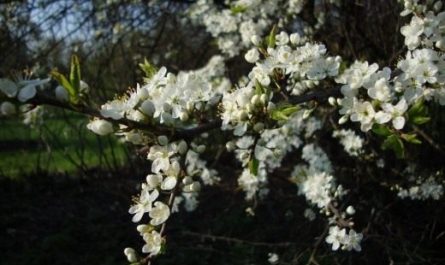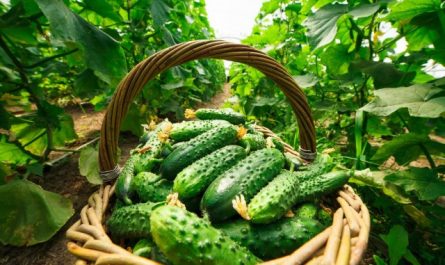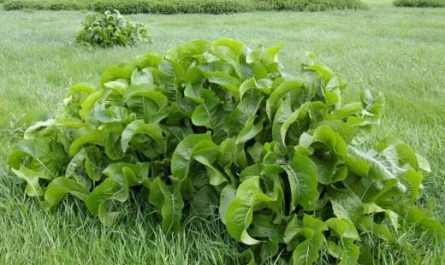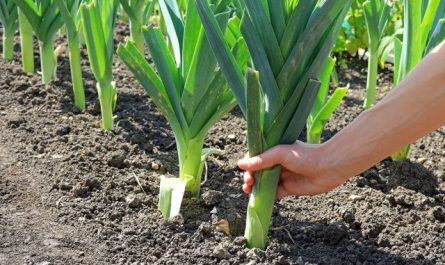Pruning – this word scares many, and some owners of garden plots simply ignore pruning, removing only dry and broken shoots. Others, on the contrary, take on pruning too zealously, having read only a few articles on this topic and make a whole bunch of mistakes at once. Let’s sort out the mistakes today. Let those who are afraid to take up the pruning shears or garden saw once again learn from the mistakes of others, so as not to make their own.

1. Errors in pruning timing
Let’s start with timing, because many people don’t realize that it’s very important. It’s worth firmly grasping one simple truth: pruning is the earliest spring activity that should be carried out in the garden, and the best time for pruning is the very beginning of spring, a period when there is no danger of severe frosts, but there are still at least a couple of weeks before bud break.
It is not recommended to prune plants in winter; such pruning is only permissible in the southern regions of Russia, where winter temperatures are hardly lower than our spring temperatures. If you prune fruit trees in our region in winter, severe frosts immediately following pruning can damage both the exposed tissue of the cut, and the bark, and even the cambium located near it.
As for the specific timing of spring pruning, they depend largely on the conditions of a particular year. In central Russia, for example, the optimal timing for pruning is March, at which time, as a rule, the snow settles, but does not melt completely, and it is convenient for the pruner to move along its surface without getting stuck in the mud.
But no matter when you start pruning, as we have already said, it is important to finish it at least a couple of weeks before the start of active sap flow. During the period of sap flow, which usually begins when the average daily temperature passes +5 degrees, the roots begin an active supply of moisture with mineral substances dissolved in it up the vessels of the wood to all organs and tissues of the plant.
If pruning is completed 12-15 days before the start of active sap flow, that is, when the cuts after pruning remain dry, then the vessels will almost instantly fill with air and it, like a cork, will seal them, preventing the release of juice later. Taking this into account, in principle, pruning can be completed later, that is, not two weeks before the start of sap flow, but, say, a few days. But it is sometimes very difficult to accurately determine the date of the start of sap flow, therefore, as they say, it is easier to play it safe.
If pruning is done later, when moisture is already actively supplied through the vessels, then air will not get into the vessels and sap will flow out of them. Loss of sap leads to exhaustion of the plant, and the flowing sweetish liquid will become a real bait for various pests and diseases, such as sooty fungus. Settling on shoots, sooty fungus leads to blockage of the bark stomata, reduced air exchange and decreased winter hardiness of trees.
Pruning outside the recommended time can only be done if inaction can have a more negative effect on the plants, for example, if a strong gust of wind breaks a large branch and its further swaying and breaking can only cause more severe injuries associated with the tearing of the bark. If pruning is necessary in winter, when branches, for example, can break from heavy snow stuck to them, you need to wait until the first thaw.
It is dangerous to trim in frosty weather because at this time the wood is quite brittle and the saw does not cut it, but rather chips it, which is why the cutting tool can cause scuffs and damage tissues located deeper.
In the same case, if thaws are not expected in the near future, and pruning needs to be done urgently, then when pruning, try to leave a stump of 10-11 centimeters long from the branch that needs to be removed. Then all the damage from cutting in frost and from further frosts will negatively affect only this part of the branch that you left. In the spring, this part can be safely removed.
2. Errors in pruning regularity
It’s all quite simple here: usually gardeners, especially beginners, do not pay any attention to the fruit tree (in terms of pruning) for a long time. This can last for years, until the tree begins to bear fruit or even longer.
Over time, owners of fruit tree plots notice that their plants often get sick, produce a weak harvest, and look untidy. They begin to prune them vigorously, using all the pruning methods known to them. This is where the mistake lies: neglected trees, accustomed to growing as they want, from such an execution either begin to get sick and slow down their development even more, or become overgrown with a large number of water sprouts – vertical, thick shoots that draw away most of the nutrients, but do not produce fruit themselves.
In fact, pruning should be done regularly and start from the first year of planting the seedlings on the site. If you have a neglected tree, prune it in parts, removing about a third of the shoots annually, then it will not be a big stress for the plant.

3. Stumps are also a mistake
When pruning, it is necessary to make a cut “on the ring”, that is, in such a way that the tree has the opportunity to eliminate, to seal the wound with its own bark. Even if the wound is large, a roller of bark will still actively begin to form along its edges, and this can already prevent the decay of the area left from the cut.
If you, when cutting a branch, leave a stump, often it is 3-4 cm long, then this is almost a guarantee that the bark around its perimeter will begin to deteriorate. An exception here may be a forced cut in the winter in frost, the benefits of which we talked about above, only in this (again, exceptional case) can you leave a stump.
Later, if in the spring we left a stump when cutting and the bark around its perimeter began to disintegrate, then spores of various harmful fungi may “settle” in the dust left by the bark, various pests may remain for the winter, or the terrible enemy of any tree – the bark beetle – may settle. In any case, there will be no advantages from leaving a stump when pruning, and as a result, the entire base of the knot that you left may perish. But these are visible changes, there are also hidden from the eyes.
Thus, an abandoned stump can significantly disrupt the flow of nutrients to the root system, the tree will be weakened and will begin to reject the stump (usually with part of the wood), which will lead to the appearance of a hollow, and this is an open gate for both the tinder fungus and the black cancer.
If a stump from a once large branch is left during pruning, it usually does not die off; powerful vertical shoots appear from the dormant buds – water sprouts, which draw a significant share of nutrients to themselves and invest them only in their growth, without forming flower buds, and, consequently, fruits.
Do you need all these problems? We think not, and all of them can be avoided by completely removing the branch by cutting it “on the ring”.
4. Do not slaughter young animals unnecessarily.
How often can you notice: a novice gardener cuts off branches here and there (wherever he has to, haphazardly). Such pruning is absolutely unnecessary for a tree. Shortening the tops of shoots can be especially dangerous when trees are actively growing. What happens in this case? By shortening such shoots, you literally stop their growth in height, thereby causing the formation of a pair of water sprouts, which, instead of a shoot that is now blocked from going up, will actively develop upward, literally taking away all the nutrition from the lateral shoots.
If pruning of “young growth” is dictated by the desire to expand the crown and strengthen the skeletal branches, then you need to remove the central conductor. Such a simple technique will allow you to transfer growth to the very first, strongest lateral branch. Then you will need to monitor the condition of the crown and simply not allow new leading shoots to develop by pruning them or bending vertical branches, which in this state will begin to actively grow fruit buds, which suits us quite well.

5. Severe pruning is also a mistake
This is perhaps the most frequent and widespread mistake. Gardeners sometimes take on pruning too zealously and shorten the shoots very much. In this way, you literally move the overgrowing part of the shoot down, and as low as you remove the branch itself. It is clear that in this case, the topmost bud will consider itself an apical bud, and the two closest buds will become the strongest.
Let’s simulate a situation: you cut a shoot short, say, four buds. What does this mean? That you left the plant with only the growth shoot zone, and they will take all the nutritious juice. This means that you have carried out pruning aimed at increasing growth, and all the branches immediately became the main ones. If you do this pruning again in a year, the branches will be even stronger and form a real bunch of fattened shoots, which can only be corrected by straightening it. But if you had initially cut the shoot more weakly, you would have gotten not a bunch, but a branch with fruiting buds.
6. Bark tears – the effect of improper cutting of large branches
Quite often in their practice, a gardener faces the need to trim powerful branches of a large diameter. Sometimes it is impossible to hold one such branch in one person’s hand. As a result, when cutting, it breaks off and a large tear in the bark is obtained, which is then very long and difficult to treat. How to saw large branches? First, we advise cutting off as many side shoots as possible on the branch to reduce its weight.
Next, you need to step back from the place where you would cut the branch “to the ring”, about twenty centimeters and cut the branch in this place to about half from the bottom, then make a cut about four centimeters closer to the trunk, but from the top. In this way, the branch will break off as expected (in a controlled manner), without the formation of a bark tear. All that remains for you to do is to cut the remaining “stump” “to the ring”.
7. Neglected sharp corners
Sharp angles of branches from the trunk are often left out of ignorance. It seems that the branch grows comfortably, does not bother anyone, does not shade anything, so what if the angle is 30 degrees? In fact, there is nothing good about this. The optimal angle of the shoot from the trunk should be from 45 to 90 degrees, and anything less is no longer the norm.
Later, when the branch grows, thickens, gains mass, elementary cracking will occur and the branch will simply fall off the trunk or another branch. A large fracture of the branches will form, which, firstly, will be an open gate for infection, and secondly, a serious problem that is very difficult to eliminate.
It is necessary to fight sharp angles of branching as early as possible, for which it is necessary to remove one of the branches by cutting “on the ring”. Even in the case when above the grafting site the fruit tree forms an additional, gorgeous-looking shoot, which over time essentially becomes a second trunk, it must be removed as quickly as possible. If you regret cutting it off, it will bear fruit for several years, but then from a slightly stronger than usual gust of wind it will break so that even tying the branches may not help.
8. Do not smear the cut on raw
In conclusion, a rule for using garden pitch. Many people are in too much of a hurry and immediately after pruning cover the cuts with garden pitch. In fact, this should not be done: neither garden pitch nor paint may adhere to the damp surface of the cut. You need to wait about a day, let the cuts dry and only then begin to insulate them with garden pitch or garden paint.
These are all the main mistakes that can be made when pruning; if you avoid them, your trees will be well developed and will give you high and stable yields.



















